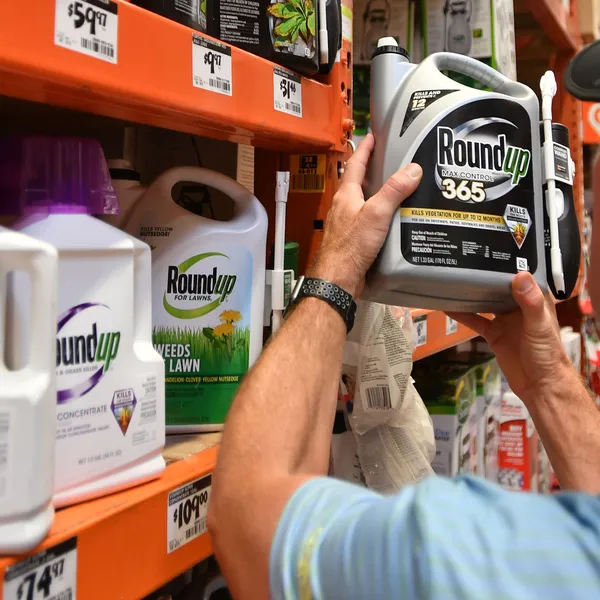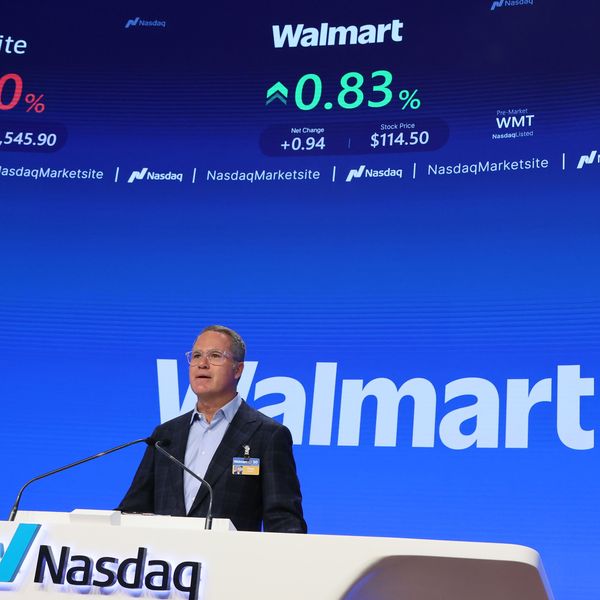Controversial Insecticides Could Have Bigger Impact on Biodiversity 'Than We've Ever Seen Before'
New research on "neonics" shows lasting impact on wetlands with "domino effect"

Speaking to Canada's CBC News about findings from her four-year study in progress, Christy Morrissey, a biologist with the University of Saskatchewan, warned that the widespread use of "neonics," as they are also called, across Canada's Prairies has contaminated wetlands, thereby risking a "domino effect" on the insects and birds that demand upon them.
Neonicotinoids have been linked to harm to bees and other pollinators, as well as the developing human nervous system, and a report on bee mortalities released by Canada's pesticide regulatory body, the Pest Management Regulatory Agency, "concluded that current agricultural practices related to the use of neonicotinoid treated corn and soybean seed are not sustainable."
CBC News reports that "in Western Canada, neonics are most commonly found on canola," and adds that all of the 8.5 million hectares of canola planted in the three Prairie provinces--Alberta, Saskatchewan and Manitoba--have been treated with neonics.
"We all want to have food that we consume and enjoy. But at what cost? Is that at the cost of having no more birds around? Of having no more butterflies? Having no bees?"
--Christy Morrissey, University of SaskatchewanIn addition to finding concentrations of neonics far above levels thought to be safe for insects, Morrissey's research found that the insecticides persisted in the water in some cases for years, meaning that "the bugs... basically are being hit continuously with the chemical."
Given that at least 44 percent of cropland across Alberta, Saskatchewan and Manitoba has been doused with neonics, Morrissey told the news agency that the area of potential harm was vast, and said that "upwards of 80 to 90 per cent of the wetlands [her research team sampled] are contaminated."
Her research so far points to a decline in mosquitoes and midges--and "insects are basically the food supply for a lot of wildlife," Morrissey said.
"We all want to have food that we consume and enjoy. But at what cost?" Morrissey asked. "Is that at the cost of having no more birds around? Of having no more butterflies? Having no bees? People are thinking about that now."
Guardian columnist George Monbiot wrote that neonicotinoids are "ripping the natural world apart," referring to them as "the new DDT," and warning they are "another demonstration of the old truth that those who do not learn from history are destined to repeat it."
__________________
An Urgent Message From Our Co-Founder
Dear Common Dreams reader, The U.S. is on a fast track to authoritarianism like nothing I've ever seen. Meanwhile, corporate news outlets are utterly capitulating to Trump, twisting their coverage to avoid drawing his ire while lining up to stuff cash in his pockets. That's why I believe that Common Dreams is doing the best and most consequential reporting that we've ever done. Our small but mighty team is a progressive reporting powerhouse, covering the news every day that the corporate media never will. Our mission has always been simple: To inform. To inspire. And to ignite change for the common good. Now here's the key piece that I want all our readers to understand: None of this would be possible without your financial support. That's not just some fundraising cliche. It's the absolute and literal truth. We don't accept corporate advertising and never will. We don't have a paywall because we don't think people should be blocked from critical news based on their ability to pay. Everything we do is funded by the donations of readers like you. Will you donate now to help power the nonprofit, independent reporting of Common Dreams? Thank you for being a vital member of our community. Together, we can keep independent journalism alive when it’s needed most. - Craig Brown, Co-founder |

Speaking to Canada's CBC News about findings from her four-year study in progress, Christy Morrissey, a biologist with the University of Saskatchewan, warned that the widespread use of "neonics," as they are also called, across Canada's Prairies has contaminated wetlands, thereby risking a "domino effect" on the insects and birds that demand upon them.
Neonicotinoids have been linked to harm to bees and other pollinators, as well as the developing human nervous system, and a report on bee mortalities released by Canada's pesticide regulatory body, the Pest Management Regulatory Agency, "concluded that current agricultural practices related to the use of neonicotinoid treated corn and soybean seed are not sustainable."
CBC News reports that "in Western Canada, neonics are most commonly found on canola," and adds that all of the 8.5 million hectares of canola planted in the three Prairie provinces--Alberta, Saskatchewan and Manitoba--have been treated with neonics.
"We all want to have food that we consume and enjoy. But at what cost? Is that at the cost of having no more birds around? Of having no more butterflies? Having no bees?"
--Christy Morrissey, University of SaskatchewanIn addition to finding concentrations of neonics far above levels thought to be safe for insects, Morrissey's research found that the insecticides persisted in the water in some cases for years, meaning that "the bugs... basically are being hit continuously with the chemical."
Given that at least 44 percent of cropland across Alberta, Saskatchewan and Manitoba has been doused with neonics, Morrissey told the news agency that the area of potential harm was vast, and said that "upwards of 80 to 90 per cent of the wetlands [her research team sampled] are contaminated."
Her research so far points to a decline in mosquitoes and midges--and "insects are basically the food supply for a lot of wildlife," Morrissey said.
"We all want to have food that we consume and enjoy. But at what cost?" Morrissey asked. "Is that at the cost of having no more birds around? Of having no more butterflies? Having no bees? People are thinking about that now."
Guardian columnist George Monbiot wrote that neonicotinoids are "ripping the natural world apart," referring to them as "the new DDT," and warning they are "another demonstration of the old truth that those who do not learn from history are destined to repeat it."
__________________

Speaking to Canada's CBC News about findings from her four-year study in progress, Christy Morrissey, a biologist with the University of Saskatchewan, warned that the widespread use of "neonics," as they are also called, across Canada's Prairies has contaminated wetlands, thereby risking a "domino effect" on the insects and birds that demand upon them.
Neonicotinoids have been linked to harm to bees and other pollinators, as well as the developing human nervous system, and a report on bee mortalities released by Canada's pesticide regulatory body, the Pest Management Regulatory Agency, "concluded that current agricultural practices related to the use of neonicotinoid treated corn and soybean seed are not sustainable."
CBC News reports that "in Western Canada, neonics are most commonly found on canola," and adds that all of the 8.5 million hectares of canola planted in the three Prairie provinces--Alberta, Saskatchewan and Manitoba--have been treated with neonics.
"We all want to have food that we consume and enjoy. But at what cost? Is that at the cost of having no more birds around? Of having no more butterflies? Having no bees?"
--Christy Morrissey, University of SaskatchewanIn addition to finding concentrations of neonics far above levels thought to be safe for insects, Morrissey's research found that the insecticides persisted in the water in some cases for years, meaning that "the bugs... basically are being hit continuously with the chemical."
Given that at least 44 percent of cropland across Alberta, Saskatchewan and Manitoba has been doused with neonics, Morrissey told the news agency that the area of potential harm was vast, and said that "upwards of 80 to 90 per cent of the wetlands [her research team sampled] are contaminated."
Her research so far points to a decline in mosquitoes and midges--and "insects are basically the food supply for a lot of wildlife," Morrissey said.
"We all want to have food that we consume and enjoy. But at what cost?" Morrissey asked. "Is that at the cost of having no more birds around? Of having no more butterflies? Having no bees? People are thinking about that now."
Guardian columnist George Monbiot wrote that neonicotinoids are "ripping the natural world apart," referring to them as "the new DDT," and warning they are "another demonstration of the old truth that those who do not learn from history are destined to repeat it."
__________________

